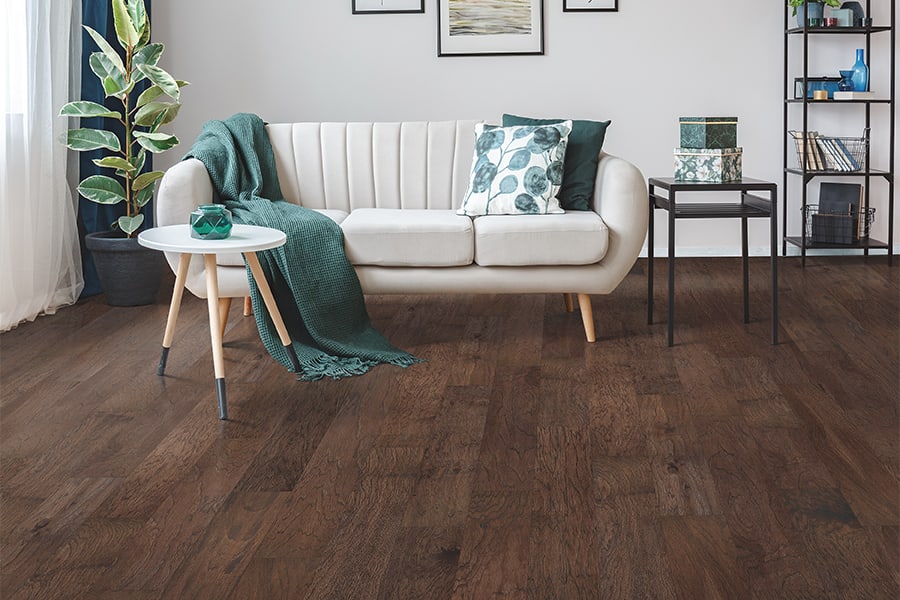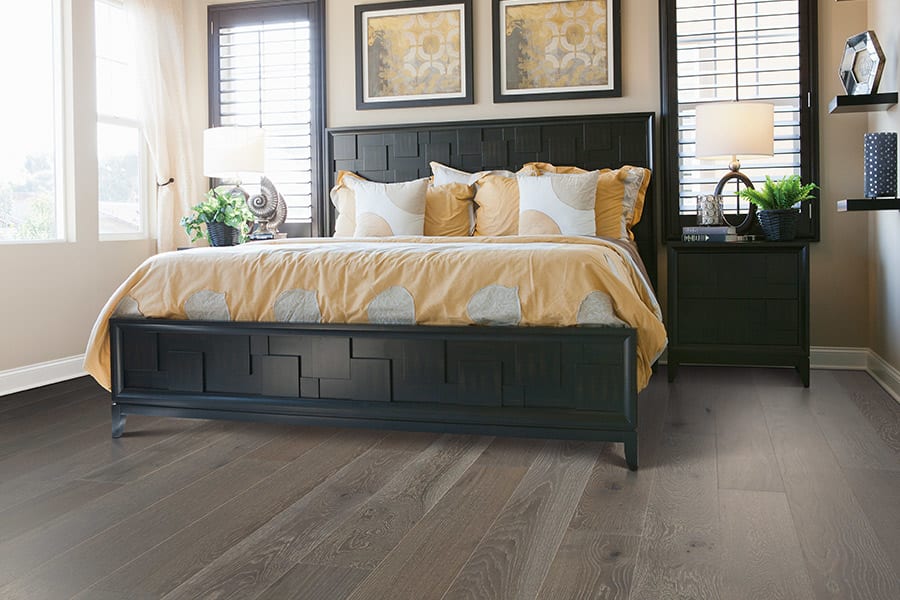Request an estimate
Types of hardwood
While there are thousands of species of wood, wood used for flooring comes in two types: solid and engineered.
Solid hardwood is simply planks of wood. It needs to be attached, by way of nails or staples, to a subfloor that is usually made of wood. It is susceptible to shape changes due to moisture and temperature shifts.
Engineered hardwood is specially made using thin sheets of solid wood that are bonded together. Compared to solid hardwood, engineered hardwood can be installed in more places.
The species of the wood can affect its appearance and its durability. Softer woods such as pine and cherry are not suitable for use in high-traffic areas. Harder woods like oak or maple are more durable. Different species have different grain structures as well, which could affect the appearance of the flooring. Not to mention, there are exotic species that are more expensive but provide a unique look. In addition to the differences between species, there are differences in color within individual species.
Beyond the natural look of the wood, you must also consider the edge detail, or how the boards are cut, and the finish. The edge detail can impact the look of the boards--either making them stand out or helping them blend out seamlessly. It all depends on what you want the room to look like. The finish not only adds a luster to the wood, it helps protect it from abuse. Tough urethane finishes help your wood to stand up to heavy, repeated use.
Finally, the way the boards are installed has an impact on the final look of the room. The direction the boards are installed can make the room look longer or more spacious. In addition, borders and inlays can add pizazz to a room.
Carpet Spectrum's trained experts can help you choose the hardwood that's right for you. Visit one of our two locations to see what we have to offer!
Solid hardwood is simply planks of wood. It needs to be attached, by way of nails or staples, to a subfloor that is usually made of wood. It is susceptible to shape changes due to moisture and temperature shifts.
Engineered hardwood is specially made using thin sheets of solid wood that are bonded together. Compared to solid hardwood, engineered hardwood can be installed in more places.
The species of the wood can affect its appearance and its durability. Softer woods such as pine and cherry are not suitable for use in high-traffic areas. Harder woods like oak or maple are more durable. Different species have different grain structures as well, which could affect the appearance of the flooring. Not to mention, there are exotic species that are more expensive but provide a unique look. In addition to the differences between species, there are differences in color within individual species.
Beyond the natural look of the wood, you must also consider the edge detail, or how the boards are cut, and the finish. The edge detail can impact the look of the boards--either making them stand out or helping them blend out seamlessly. It all depends on what you want the room to look like. The finish not only adds a luster to the wood, it helps protect it from abuse. Tough urethane finishes help your wood to stand up to heavy, repeated use.
Finally, the way the boards are installed has an impact on the final look of the room. The direction the boards are installed can make the room look longer or more spacious. In addition, borders and inlays can add pizazz to a room.
Carpet Spectrum's trained experts can help you choose the hardwood that's right for you. Visit one of our two locations to see what we have to offer!















